Clematis montana var. sericea
syn. Clematis spooneri
Family: Ranunculaceae
Pronounced: KLEM-uh-tiss mon-TAN-ah sur-ISS-ee-uh
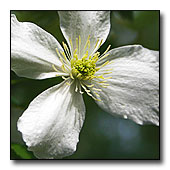
Quick Jumps
Growing Guide
Rainy Side Notes
GROWING GUIDE
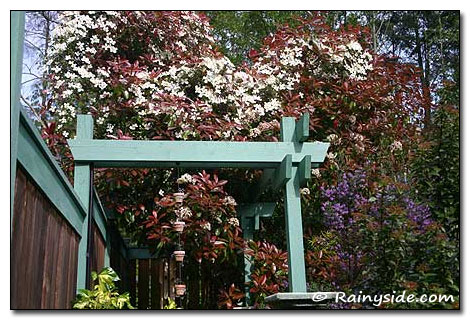
Origin:
China.
Plant Group:
Vines.
Hardiness:
Sunset zones:All (Western).
USDA zones: 6-9.
Mature size:
Height: 25 feet (8 m).
Flowering period:
Spring to early summer.
Flowering attributes:
White, 4-tepaled flowers with yellow anthers.
Leaf attributes:
Deciduous 3-inch-long 3-palmate green leaves.
Light:
Tops in full sun, feet in shade; partial shade.
Soil:
Fertile, humus rich, well-drained soil.
Feeding:
Mulch well with composted manure or compost. Fertilize once a month with a complete organic fertilizer during the growing season.
Propagation Methods:
Layer branches in late winter.
Basal and softwood cuttings in spring.
Division in spring.
Semi-ripe cuttings in early summer.
Pruning Methods:
Pruning group 2 or B.
Rainy Side Notes
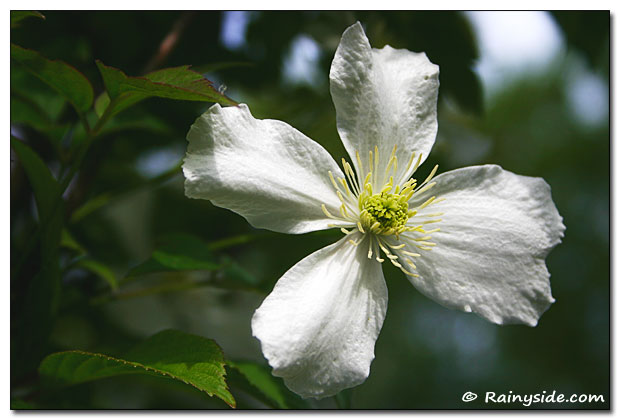
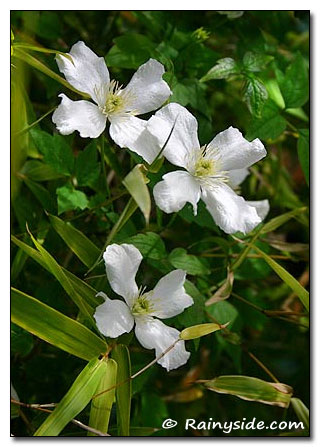
Here we have a vine with an identity crisis because of all the name changes it has been through, almost as many as sweet autumn clematis. Actually, I am having the crisis. I cannot get used to calling my lovely vine, Clematis spooneri—C. montana var. sericea—even though I often thought it looked similar to C. montana. Regardless of how I feel about it, the name has been changed back to the original epithet botanist Franchet gave it in 1907—Clematis montana var. sericea. I hope the name will stick the second time around. Most sources you find on this particular clematis point to Clematis spooneri. It will take awhile before the new/old name catches on in the garden community.
Now that we have the name business taken care of, let us talk about where this clematis should grow in the garden. No wimpy arbors for this one; like most clematis in the montana group, it will swamp a flimsy arbor in record time. Give it a beefy structure to climb—perhaps the Seattle Space Needle.
Planting and Care of Clematis.
Photographed in author's garden.
A Pacific Northwest Plant of the Week (2013)
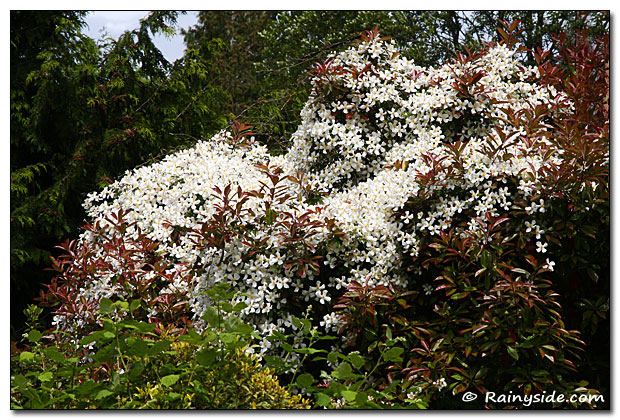

Gardening for the Homebrewer: Grow and Process Plants for Making Beer, Wine, Gruit, Cider, Perry, and More
By co-authors Debbie Teashon (Rainy Side Gardeners) and Wendy Tweton
Copyright Notice | Home | Search | Vines

